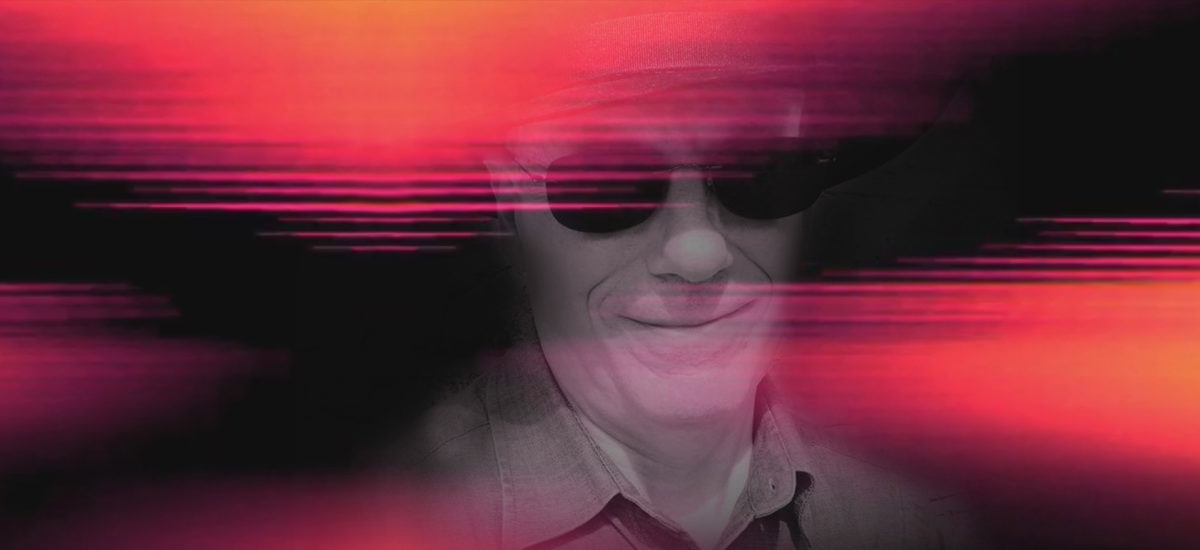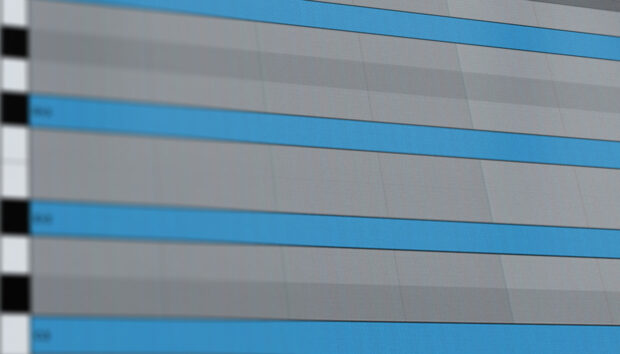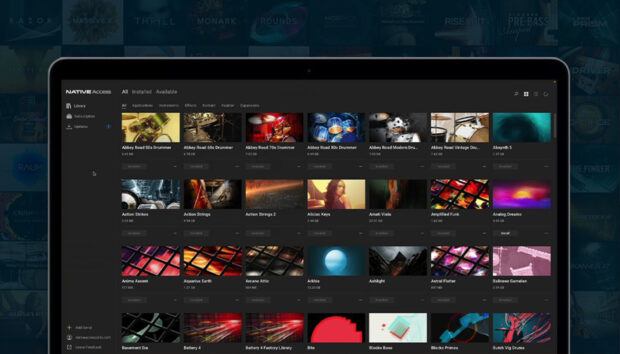
The best musical projects are often those that are the most unplanned. Case in point: Black Sketches, by Native Instruments user LenB. Black Sketches is a series of 16 creative musical pieces inspired by Komplete Sketches. Sharing some sonic examples, LenB outlines the creative and technical processes that went into the project.
In November 2016 Native Instruments released Komplete Sketches: 24 musical vignettes from a diverse range of future-thinking producers, including Jlin, Deru, and more. Each sketch was created exclusively using sounds from KOMPLETE 11, exploring contemporary and unique sonic directions, accompanied by the composers’ production notes. Inspired by the project, London-based musician LenB released an homage to the project entitled Black Sketches earlier this year.
“Up until a year ago I used to be a psychiatric nurse, now I make music and digital art,” explains LenB. “I’ve always loved music, but would never have believed I had the ability to create it myself until a few friends persuaded me to give it a try. It was a huge emotional epiphany to me that I could actually produce music that sounded nice.”
LenB has been producing music for just over six years and relishes the creative challenge. His influences range from pre-Wall Pink Floyd, Tangerine Dream, and Vangelis (pre-Chariots), through to Mozart, Beethoven, and Aphex Twin’s Selected Ambient Works. Quite a broad range then, but how did he come to make Black Sketches?
“Native Instruments don’t just make all this fantastic musical software. They invest in setting ideas off in your head about how you might use it. Sketches was like that for me. It was a statement from each artist about how they put their sketch together, and which products they used. I’m always trying to push the limits of what I can do musically, which gave me the idea of following along.”
Why Black Sketches?
It was a play on Dangermouse and Jay Z’s take on The Beatles’ The Grey Album. I even put a Beatles reference/sample in one of the tracks. You’ll find it when you listen.
What changed along the way?
I wanted to produce music of my own, not just deconstruct and remake the sketches themselves. I included my flute-playing where I could, and, as I like making field recordings, I added them too. Things changed pretty quickly, as it was not possible to completely distinguish an artist’s construction method, the instrument they used, or even their approach to music. For each one I ended up listening to their past output to try and get a better feel. Then after the first few, I started trying to emulate two or three artists’ methods in the same track, and the sketches I was producing became full-length ideas, and the project grew from there. “Mission creep”, they call it.
How did the track ‘Lights in the Sky’ – in which you were trying to emulate the production methods of Angel Ho – take shape?
That one developed quite quickly, picking the kick and snare from Battery, adding a layered sample of my own in Polyplex for a metallic crunching cymbal sound, and knocking up a basic pattern for later variation and development. I learned from Angel Ho that I don’t think about my drum sounds enough, so I put a lot of thought into selection, tweaking, and pattern-building in this track, also adding a groove preset I’d devised myself. Then a few of my field samples went in: a creaking cloister door closing from a French monastery, a hit on some wobbly building site hoarding, and the like. Angel Ho also made me look again at some of the synths available in Reaktor.
I hadn’t really exploited Carbon before, so I used this for a couple of the bass sounds. I used the available presets without adjustment, but coupled that with a trick I’ve used before, that is to add Guitar Rig as FX, finding a good preset to match and making a really big sound. Rooting around in the available Reaktor ensembles also took me to Oki Computer, which together with Guitar Rig produced a lovely bass with lots of higher partials. Angel Ho added a slice of arpeggiated synth, so I did the same. I then recorded some flute on a loop, and picked the best licks to include. Using Absynth as an FX brought the flute to life in this piece. I don’t think people always realise that is something you can do with Absynth. And as Angel Ho used some of the Kontakt factory library brass in his track, I used a little Session Strings to add a final bit of sweetness to mine, and a bitcrushed drum sound from Damage at certain points to accentuate tension. And there you have it, the LenB version of Angel Ho’s sketch.
What about ‘2-catch’, the track you made following the sketch by Ziúr?
It’s taken me ages to unravel exactly what Ziúr did. I had to record it as a WAV and import it into my DAW, then try to match the tempo and time signature. It’s only a 40-second sketch, but it’s really clever. The bar-by-bar speed stays the same throughout, but the number of beats per bar changes. Thus the speed stays the same and speeds up at the same time. So I used the same trick in my sketch. Like so often, I find my music wants to go its own way. I wanted to create a sparse, beat-based mix like Ziúr, but the music I was making wanted to go somewhere else.
A big part of that was including samples I’d collected a while back at Euston Station in London, from the main concourse and the connected underground car park. These were added to a DrumLab kick, and a Battery snare and click, that were grown into a pattern by exploiting one of the DrumLab pattern presets. Looking back at the development of the track I see that I added all sorts of samples and noises to develop the overall feel, before I even began adding any harmonic material. It was only after I had this that I added a bit of synth, and built two additional sections at a faster speed, before adding a wobble-bass in sync with the beat over the transition sections to smooth them over.
In ‘Something in the City’ you tried to incorporate the methods of more than one artist. Why did you take this approach?
The aim with this one was to make three separate sections, one for each of the artists, and a final part combining them all. DJ NA used a loop-based method to layer up his sketch, and I followed suit, using Damage for the drum sounds throughout the track. I added a percussion loop from the Kontakt Cuba ensemble, some Action Strikes, and some synth sounds from Evolve. Using lots of unchanged loops is something I usually won’t do. If I do use them, I want to hack, mangle, and slice them, or do something to make them my own. It was interesting to hold myself back from that and discover that I can make good music rather quickly that way.
In the next section I followed Phon.o, building a more independent drum line using Kontakt and Battery, and delved into my own sample library for a couple of loops to spice it up. All the drums in this section were passed through Supercharger GT for extra punch to match the preceding Damage samples. As Phon.o used a big synth, I took one from Razor and developed the synth line from the preceding section. For Nkisi’s, I added some drums from the Kontakt West Africa collection, but pushed them through a Guitar Rig distortion/amp preset to give them a flavor that matched the Damage drums that make up the spine of the track. Like her, I also used Absynth for this, but gave the melody much more of a rhythmic flavor. Finally, I added bass sounds from Evolve Mutations, and some high sounds from Kinetic Metal. To make the final section I picked elements from each of the three, and once I had sounds that fitted together, I edited them a little to make the whole thing work.
Which sketches did you find the hardest?
The ones which were furthest from my usual style of music-making. Strongly beat-based tracks are a challenge for me. Jlin has a fantastic feel for beats, both timing and sound quality, as do many of the other Sketches artists such as M.E.S.H. Other than that, the sketches that focused on moving thick textures of sound required much more sensitivity than I seemed to have at my disposal. My sound selection and construction skills need more work before I’ll be anything like as good as Throwing Shade, WIFE, or Schwarzmodul.
Have you had any contact with the Sketches artists?
I sent a link out to all the artists who had accounts on Soundcloud, and a few of them were kind enough to make some encouraging replies.
What are your plans now you have completed Black Sketches?
I’ve been studying harmony and voice-leading a lot over the past year. I haven’t yet made the music I really want to make. Black Sketches was a learning exercise for me. I can’t yet describe the music I want to make, I just know I haven’t found it yet. Learn the techniques I need in order to construct it; create the connection between my life, my emotions, and the music I make: One or all of those things, that’s what I am going to do next.
Listen to more of LenB’s sounds here
Listen to the original Komplete Sketches here















